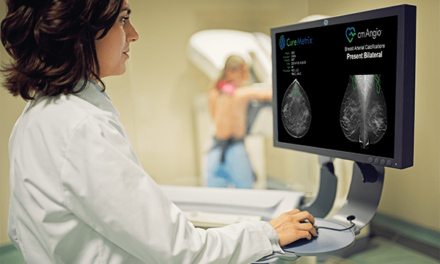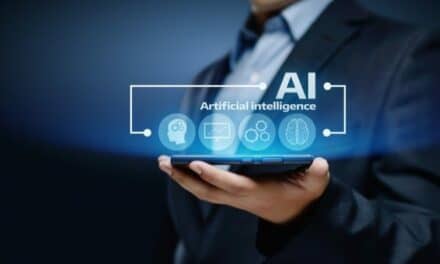By Binseng Wang, ScD, CCE, fAIMBE, fACCE
For some time, financial and technology media have been sounding the alarm about job losses to artificial intelligence (AI) in the not-too-distant future. More recently, general media (e.g., The New Yorker), and even a presidential candidate—Andrew Yang—have jumped on the bandwagon forecasting doom.
Obviously, forecasts on the extent of impact vary significantly from one source to another and the estimated amount of job losses depend on the job type. Nonetheless, it is valid to ask whether AI is going to slash clinical engineering/health technology management (CE/HTM) jobs, especially for those who are not planning to retire in the next decade.
There is no question that AI can and will affect medical equipment maintenance and management. For example, one company has been using AI tools to predict parts failure in imaging equipment by analyzing error codes generated by the machines themselves. This kind of predictive maintenance will reduce not only the need for failure-finding inspections but also the downtime caused by equipment failures as well as costly proactive replacement of parts before the actual need arises.
Furthermore, predictive maintenance will reduce patient risks caused by equipment failure during diagnosis or treatment and improve patient satisfaction due to fewer exam cancellations and rescheduling caused by unforeseen failures.
While these uses of AI can certainly improve equipment maintenance, their impact on CE/ HTM jobs remains unknown. It is foreseeable that original equipment manufacturers (OEMs) may use such tools to conduct remote diagnosis of equipment performance and then dispatch field-service staff whenever a need is detected. By itself, this is good for both OEMs and health delivery organizations (HDOs) and would appear, at first glance, not to have a significant impact on jobs.
However, after realizing that the troubleshooting work has already been done by AI, OEMs may be tempted to deploy low- skilled staff for such work, because these people need to know only how to replace the defective part AI identified. Actually, it is foreseeable that OEMs will only require someone who has a driver’s license, is reasonably handy with tools, and can follow directions (and have legal working status). This not only means lower compensation but also less risk of OEM employees jumping ship to—or becoming—a competitor.
Similar transitions will also happen to CE/HTM professionals working for HDOs or independent service organizations (ISOs). They will also either rely on OEM’s AI tools or develop their own to enable predictive maintenance and remote troubleshooting. After all, except for low-cost, portable tools, most medical equipment will be connected to the Internet and accessible remotely. This is already happening to industrial equipment and is known as “industrial Internet of things.”
All this progress means that you cannot hope to keep your job by just doing the same old tasks over and over. Both preventive maintenance (scheduled replacement of wearable parts) and safety and performance inspections (for finding hidden and potential failures) will be replaced by predictive maintenance guided by AI. Unless you want to become a low-paid parts swapper, you need to go back to school and earn a bachelor’s or, better yet, graduate degree if you want to remain in the technical side of CE/HTM or move into management, which will be less affected by AI.
Even then I would not recommend getting too comfortable, unless you plan to retire in the next two decades. For you youngsters, I have an even worse prognosis. The advance of biological engineering (tissue engineering, genetic engineering, genomics, regenerative medicine, etc.) will likely revolutionize medicine in the next two decades and beyond. Artificial implants and organs will be totally replaced by biological ones made from the patient’s own tissue and stem cells. Transplants between persons will become obsolete.
While some diagnostic machines may still be needed, most diagnoses will be made using clinical laboratory technologies using blood, tissues, cells, and DNA extracted from patients instead of anatomical images that do not provide the underlying cause of disease. Cancer will be cured with a combination of drugs, genetic manipulations, and organ replacements. Even more astounding will be the ability to cure hereditary diseases using genetic engineering tools such as CRISPR before or just after birth. (See, for example, The Economist of April 6, 2019.)
Therefore, even fewer CE/HTM professionals will be needed in the next 20 to 30 years. To keep your job, you will need to learn how to work with “wetware,” that is, biological entities that are surrounded by fluid. Even computers and other hardware-based devices may incorporate wetware for storage and processing. But there is good news too: You are likely to live well beyond 150 years. Although this probably also means that you will not be able to afford to retire before you reach 100, you still will have approximately 50 years to enjoy retirement instead of the 25 to 30 years that old folks like me have now. Lucky you!
Ethical Concerns
Some people have become concerned that accelerated technological advances will get out of hand. Not only may some jobs be lost but much more serious consequences may also occur. For example, AI-enabled robots or genetically engineered “Frankensteins” may decide to enslave or get rid of human beings altogether (Remember Arthur C. Clarke’s fictional 2001: A Space Odyssey?).
Unfortunately, such concerns are not totally unfounded. Human greed and desire for fame have led both individuals and large companies to ignore ethics, privacy, and safety. Examples include the recent attempt to genetically reengineer newborn twins, Facebook’s sale of customer information without permission, and Boeing 737 Max design shortcuts.
As technology professionals, we need to learn from the mistakes and lessons of our predecessors so as not to repeat them. For example, years after contributing to the development of the atomic bomb and seeing its consequences in Japan, Nobel-laureate Richard Feynman said: “Scientific knowledge is an enabling power to do either good or bad—but it does not carry instructions on how to use it.” In other words, technology is nothing but a tool; it can be used to build habitats and treat sick people, but it can also be used to wage war and destroy the human species.
Instead of waiting for governments to institute strict controls, we need to remind ourselves constantly that we have ethical duties to our customers, our colleagues, and, ultimately, the patients. For example, the Institute of Electrical and Electronics Engineers recently published a document titled “Ethically Aligned Design” for engineers who work on autonomous and intelligent systems providing them with “ethical engineering” principles that include human rights, accountability, and transparency.
While I cannot offer you comforting reassurance that AI is not likely to steal your job, it will take some time. So please use the time wisely to learn and improve yourself. Furthermore, the future is not as bleak as some science fiction writers predict. I am confident that Homo sapiens will eventually learn how to avoid destroying our planet or being annihilated by robots or genetically engineered “Frankensteins.” At least I am sure that I will not be around to suffer those possible catastrophes. Lucky me!
Binseng Wang, ScD, CCE, fAIMBE, fACCE, is a principal consultant with the health technology consulting firm BSI.
References:
- https://fortune.com/2019/01/10/automation-replace-jobs/
- https://www.forbes.com/sites/cognitiveworld/2018/08/07/job-loss-from-ai-theres-more-to-fear/#6e770f8523eb
- https://www.technologyreview.com/s/610298/tech-companies-should-stop-pretending-ai-wont-destroy-jobs/
- https://www.newyorker.com/magazine/2019/03/04/are-robots-competing-for-your-job
- https://www.yang2020.com/blog/the-jobs-that-will/
- https://www.technologyreview.com/s/610005/every-study-we-could-find-on-what-automation-will-do-to-jobs-in-one-chart/
- Pandit, P., 2019. Reduce Costs and Downtime with Artificial Intelligence-Enabled Predictive Maintenance. Cleveland, 2019 AAMI Exchange
- https://www.networkworld.com/article/3243928/what-is-the-industrial-iot-and-why-the-stakes-are-so-high.html
- https://ghr.nlm.nih.gov/primer/genomicresearch/genomeediting
- https://www.economist.com/printedition/2019-04-06
- https://www.technologyreview.com/s/612458/exclusive-chinese-scientists-are-creating-crispr-babies/
- https://www.apnews.com/47f5f7fd9e0941a880b929af081a37a0
- https://spectrum.ieee.org/aerospace/aviation/how-the-boeing-737-max-disaster-looks-to-a-software-developer
- “The Value of Science,” public address at the National Academy of Sciences, Autumn 1955; published in What Do You Care What Other People Think, W W Norton, 1988






Excellent summary, Binseng. Excellent.
I would first add that artificial intelligence is nothing new in healthcare; we’re just putting it into computers now.
Less humorously, there are other considerations to be factored in as well. For example, as we integrate devices from different manufacturers into true systems (and systems of systems, for that matter), we need strategies to address emergent system failures where it may be difficult to identify a single (but complex) “component” as the root cause. Who will do the remote troubleshooting then?
This is not just a speculative concern on my part. I served for four years on the standards committee that developed 80001, and among the related guidance documents I helped develop was one for “responsibility agreements” to define prospectively how medical device manufacturers (MDMs) would support risk management of multi-vendor networked medical device systems (not to mention sharing the IoT with non-medical devices). I don’t know how the work played out after I left, but I can tell you that while I was on the committee. it was like pulling teeth to get MDMs to agree to any model that required them to work together.
This is nothing new to any of us who have more than about 10 minutes of experience in the field. Finger pointing is as old as the hills and predates today’s complex systems. And how often have we been told “You’re the only one reporting that problem”? Consider, too, that MDMs continue to refuse to open their Risk Management Files to us or anyone else,
Your point re: wetware is well taken; the particulars that drive us today will change, and quickly. We don’t have a crystal ball to help us envision what will turn into the particulars of the coming future. But from where I sit, what I see are relatively fundamentally obvious system-level issues either being avoided like the elephant in the room, not being addressed at all, or being addressed using service models that worked for a bygone era that no longer exists.
There ought to be an opportunity in that somewhere.